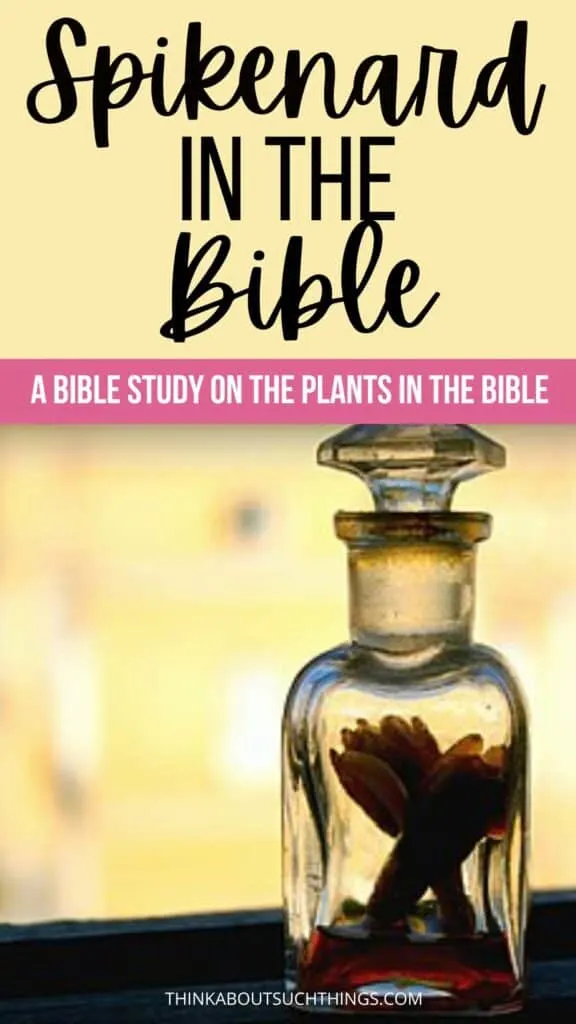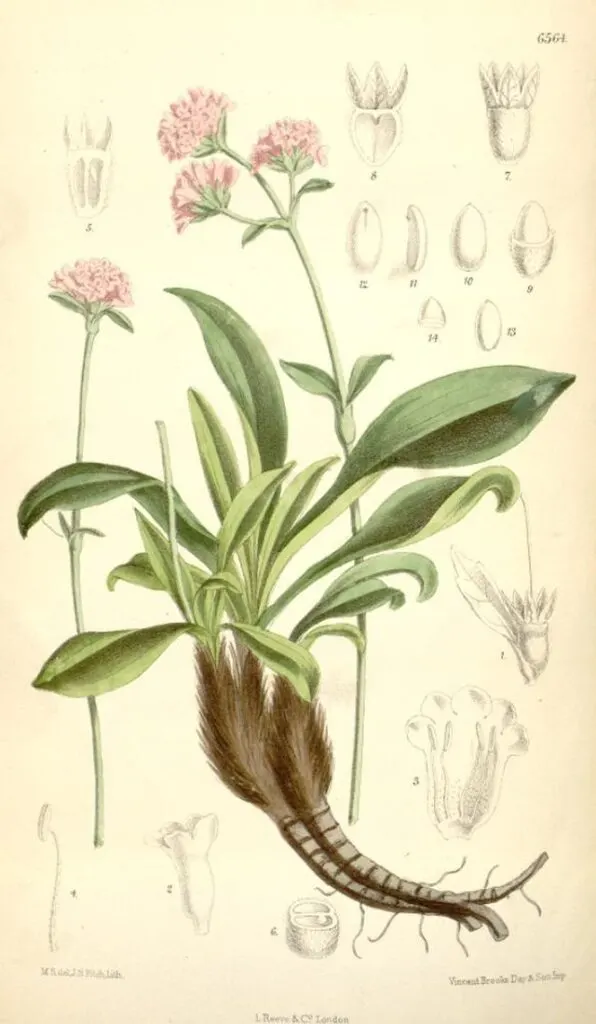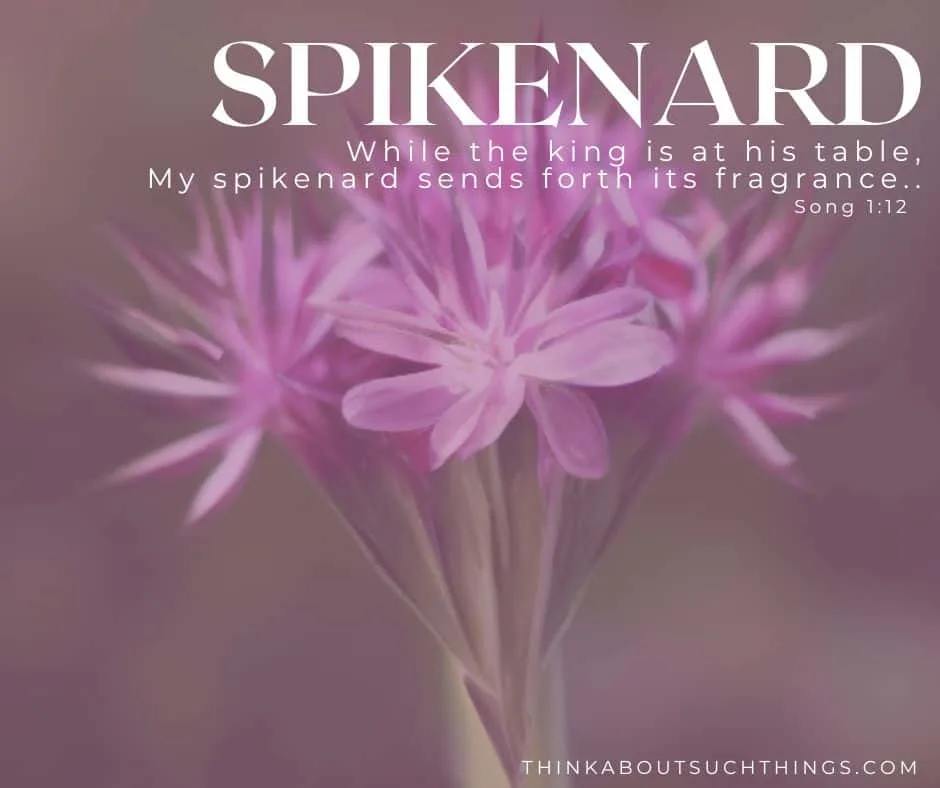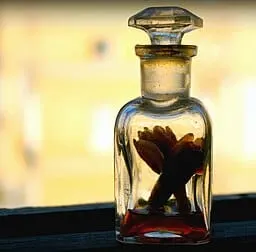In this article, we will look at spikenard in the Bible. We will explore what this unique fragrance was, how it was used, and what is symbolically means to believers. So, grab your Bible, and let’s dive in.
When reading the Bible, we can come across also many different items and elements that are part of antiquity.
And many of these references have lost their meaning to modern believers. Things that were common at the time have since become less common, or the names have changed so much that we can’t always say with certainty that it’s still the same thing.
One of those things is Spikenard. It is an interesting example.
Though it’s still around today, very few who read their Bibles will know what it is and understand its symbolism. S
o, what is spikenard in the Bible, and what symbolic meaning does it convey?

What Is Spikenard?
Ah, spikenard! Now that’s a name you don’t hear every day. According to Webster’s dictionary, spikenard is “a fragrant ointment of the ancients.” Quite poetic if you ask me.
It’s got a bit of mystery to it, doesn’t it?
Well, let me unravel the enigma for you. Spikenard, also known as Nardostachys jatamansi, is a plant that has been used in various ways throughout history, from religious ceremonies to traditional medicine.
Its essential oil, extracted from the root, carries a distinct, woody, spicy scent that can create a wonderfully soothing atmosphere.

it’s often used in meditation and prayer for this very reason1. But there are many other uses…
Here are some of the ways people have used spikenard:
- Skin Health: Mixed with a favorite moisturizer, spikenard oil is said to promote glowing skin2.
- Relief from Topical Ailments: While more research is needed, some people use spikenard oil for inflammation and infection3.
- Relaxation and Mood Uplift: It’s used to promote relaxation and an uplifted mood4.
- Natural Treatment for Various Conditions: Some people use it to naturally treat insomnia, stress, digestive problems, weak immune system, and infections5.
- Calming the Mind: Spikenard can be used to calm the deepest forms of anxiety by calming the heart, sedating the mind, and instilling a profound sense of peace6.
Isn’t it fascinating how one plant can offer so much? However, it’s important to note that while these uses are extensive, they’re based on traditional practices, and more scientific evidence is needed to fully understand and confirm these benefits.
As always, if you’re considering using spikenard, do consult with a healthcare professional first.
Now that we have looked at spikenard from a more modern viewpoint let’s see what the Bible says!
Spikenard In The Bible
נֵרְדְּ nêrd, nayrd; of foreign origin; nard, an aromatic:—spikenard.
As mentioned in the Bible, Spikenard is a type of ointment or anointing oil that was very rare in Biblical times. It is made from a plant that grows in the Himalayan Mountains around India and Nepal. The plant carries the same name.
Spikenard oil has a semi-sweet, musty, earthy, and wood-like scent and is best known for its aroma, which quickly fills a room. Keep that in mind as week keep studying…
Spikenard is mentioned five times in the Bible. There are three mentions in the Old Testament and two in the New Testament.
Some translations use the more modern term “nard” instead of “spikenard,” though.

Spikenard In The Old Testament
All mentions of spikenard in the Old Testament are in the book Song of Solomon.
In Song 1:12, the bride mentions that the king was sitting on his couch, and her spikenard gave off its fragrance, likely as a seductive type of perfume.
While the king sitteth at his table, my spikenard sendeth forth the smell thereof. – Song 1:12 KJV
“While the king was at his table, My perfume (Solomon) sent forth [his] fragrance [surrounding me]. – Song 1:12 AMP
Similarly, in Song 4:13-14, Solomon describes his bride as a garden full of fruits and spices and mentions spikenard as one of them. This is also likely a reference to her scent, like perfume.
Your plants are an orchard of pomegranates
With pleasant fruits,
Fragrant henna with spikenard,
14 Spikenard and saffron,
Calamus and cinnamon,
With all trees of frankincense,
Myrrh and aloes,
With all the chief spices— – Song 4:13-14 NKJV
Spikenard In The New Testament
The two verses where spikenard is mentioned in the New Testament occur in Mark 14:3 and John 12:3.
And being in Bethany at the house of Simon the leper, as He sat at the table, a woman came having an alabaster flask of very costly oil of spikenard. Then she broke the flask and poured it on His head. – Mark 14:3 NKVJ
Both refer to the incident where a woman called Mary entered the room where Jesus was sitting and anointed His feet with a vial of expensive spikenard ointment.
According to John’s account, Judas Iscariot was upset about the expensive oil being wasted like that. Still, Jesus said it was necessary because she was anointing Him for His burial.

How Judas reacted to the “waste” of the spikenard oil is quite interesting. We see in John 14:5 that he claimed the oil could be sold for three hundred denarii and that the money could be given to the poor.
This gives us remarkable insight into how valuable the oil was.
Since one denarius was the average wage for a day’s labor, which was the equivalent of approximately a year’s worth of salary, we could compare it to tens of thousands of dollars in modern terms.
Mary took oil worth as much as an average annual salary and poured it out on Jesus’ feet.
Considering John’s words about Judas helping himself to whatever was in the moneybag (verse 6), it’s understandable that he would have been upset by such a blatant “waste” of money.
He wanted that money for himself.
The Symbolism Of Spikenard In The Bible
From these scriptures, we can see two apparently contradicting meanings for spikenard.
The first, from Song of Solomon, spikenard symbolizes love and seduction. Solomon and his bride used spikenard as a perfume to attract one another, even from across a room, as a subtle reminder of each other as they were socializing with other people.
We see the second symbolic meaning for spikenard in Mark 14:8 when Jesus said that she had anointed His body for burial, making spikenard a sign or symbol of death. But it was His death that brought us life!
These apparent contradictions may seem confusing, even causing some to believe that the two symbols aren’t related in any way. But remember, symbolism is multifaceted and can have multiple meanings. We see this when we study colors in the Bible and numbers.
Also, we as believers should understand two things:
- Almost no symbol in the Bible is irrelevant and unrelated to other symbolism, and,
- The gospel is full of apparent contradictions that only make sense within the context of the gospel (give to receive, humble yourself to be lifted up, die to yourself so you might live, etc.)
And, just like those examples, these two “contradicting” symbols make complete sense when viewed in the light of the gospel.
Here are some other prophetic meanings spikenard can represent:
Symbol of Love and Devotion: The fact that Mary chose to anoint Jesus with spikenard, a costly and precious oil, symbolizes her deep love and devotion. It’s like she was saying, “You are worth everything to me.”
Symbol of Sacrifice: The spikenard oil was incredibly expensive – as I mentioned before it was worth a year’s wages2. By using it all at once, Mary demonstrated a willingness to give up worldly possessions out of her love for Jesus.
Preparation for Burial: Just to go a little deeper on this. In the biblical context, anointing was often associated with burial rites3. When Mary anointed Jesus with the spikenard, it was seen as a foreshadowing of his impending death and burial.
Symbol of Honor: Anointing someone with oil was a sign of honor in ancient times4. By anointing Jesus with the spikenard, Mary was showing her respect and acknowledging his significance.
Christ And His Bride
Song of Solomon is sometimes seen as a controversial book in the Bible, containing some almost explicit imagery that might seem almost out of place in the Word of God.
But we understand today that the writings between Solomon and his bride refer closely to the relationship between Jesus and His bride, the church.
As Solomon and his bride used spikenard oil as a perfume to attract one another and as a reminder of the other’s presence during social interactions, it symbolizes how we should constantly be aware of the presence of Christ wherever we are.
He is always with us, and we should remind ourselves of that fact throughout the day and think of the incredible love that made this possible.
But how did Christ make us His bride?
By His death and resurrection.
If it weren’t for Jesus’ death, we would not have been able to come to Him and be united with Him for all eternity. His burial proves that He paid the ultimate price, a price that we could never repay, to purchase us.
The gospel of peace is the missing link that ties together the two symbols of spikenard: a sign of lingering love and anointing for burial because it’s only through Jesus’ sacrificial death that we can live in His enduring love.
An Act Of Love And Enduring Worship

When Mary anointed Jesus’ feet, she didn’t just pour a few drops into her hands. She broke the vessel that carried the oil, pouring it all out on her Messiah’s feet.
Jesus admired this act so much that He said she will always be remembered for her actions.
It was the ultimate sign of love and worship from Mary. She held nothing back. She took what was probably the most valuable item she owned and sacrificed it all without fear of wasting it because Jesus was all she cared about.
That’s the kind of worship God desires – a worship of love and complete abandon. This doesn’t necessarily refer to worshiping during church services, though it is also included.
It refers to the way we worship God in our everyday lives. If we hold something back, we are not worshiping God how He wants to be worshiped.
Mary broke the jar that contained the oil, not planning to put anything back into it or keep anything bottled up inside it. Like that jar, we should be broken vessels before God in our worship.
We should not try to keep anything inside for the sake of “being religious,” and we shouldn’t try to put anything back inside once we’ve poured it out.
In many churches, it’s common practice for believers to “await a fresh outpouring.” Yet the Holy Spirit was already poured out, and God held nothing back. But how many of us consider that God is waiting for a fresh outpouring from us?
A marriage only works if the husband and wife both willingly give everything. The same applies to our relationship with God – Christ already poured out Himself completely.
Now it is up to us to break the vessels and pour ourselves out before Him as the ultimate sacrifice and our most complete act of worship.
To wrap things up…Spikenard was an incredibly expensive and valuable item in Biblical times. It’s still costly today because it’s so rare, but in Biblical times, it cost about a year’s worth of wages to have a bottle of it.
Because of that, only wealthy or royals owned it. It was seen as the ultimate proof of love and devotion when you used it or gave it to someone.
Our worship should be like anointing Jesus’ feet with spikenard. We should give ourselves to Him completely, without holding back, just like He gave Himself to us without hesitation.
That’s the worship that Christ deserves, and we shouldn’t settle for giving anything less than our everything.

Melissa is a passionate minister, speaker and an ongoing learner of the Bible. She has been involved in church and vocational ministry for over 18 years. And is the founder of Think About Such Things. She has the heart to equip the saints by helping them get into the Word of God and fall more in love with Jesus. She also enjoys family, cooking, and reading.
She has spoken in churches in California, Oregon, Texas, and Mexico and has been featured in Guidepost Magazine and All Recipes Magazine. Read More…
